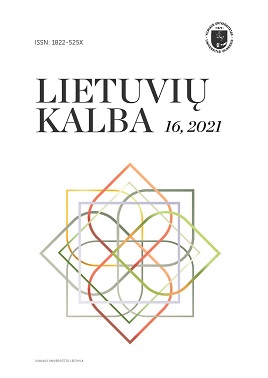Rožinė spalva dabartinėje lietuvių (rašto) kalboje
The Colour Pink in the Contemporary (Written) Lithuanian Language
Author(s): Loreta Vaičiulytė-SemėnienėSubject(s): Morphology, Semantics, Baltic Languages, Philology
Published by: Vilniaus Universiteto Leidykla
Keywords: adjective rose; colour; semantics; construction; dictionary; corpus;
Summary/Abstract: The subject of this article is the adjective pink (Lith. rožinis) denoting the colour. The goal is to investigate the semantics of pink in the contemporary written Lithuanian language in reliance on the Corpus of the Contemporary Lithuanian Language (Lith. Dabartinės lietuvių kalbos tekstynas, DLKT), and to use the findings to ‘see’ the colour pink. The names of the colour are analysed from the syntactic-semantic approach. Analysis of over 1,000 samples has revealed that, based on the things perceived as pink, the meaning of the word pink goes well beyond the thesauri definition. In its broader meaning as perceived by users of the Lithuanian language, the colour pink from the centre of the colour (the colour of rose, sweetbrier, peony) gradually transitions to white, yellow, (purplish) red, violet, orange, brown, grey. The colour pink can be artificial or the inherent colour of a thing. The adjective pink is used in combination with nouns that designate things that Lithuanians have known and considered ordinary for ages or have come across in their daily life quite recently, and use them rarely.
Journal: Lietuvių kalba
- Issue Year: 2021
- Issue No: 16
- Page Range: 70-97
- Page Count: 28
- Language: Lithuanian

